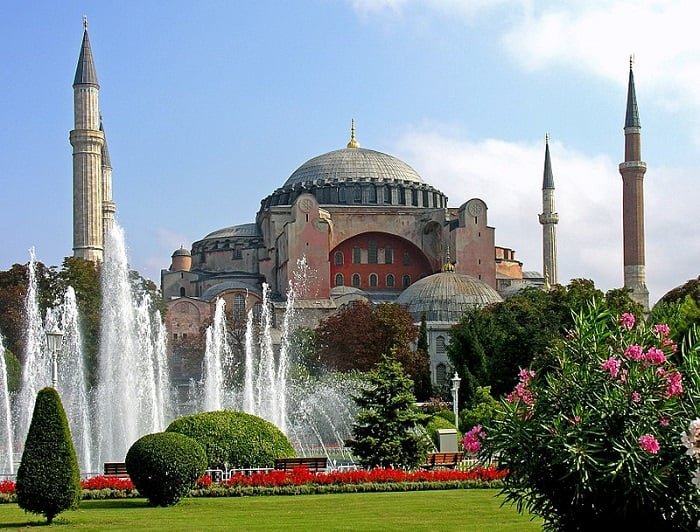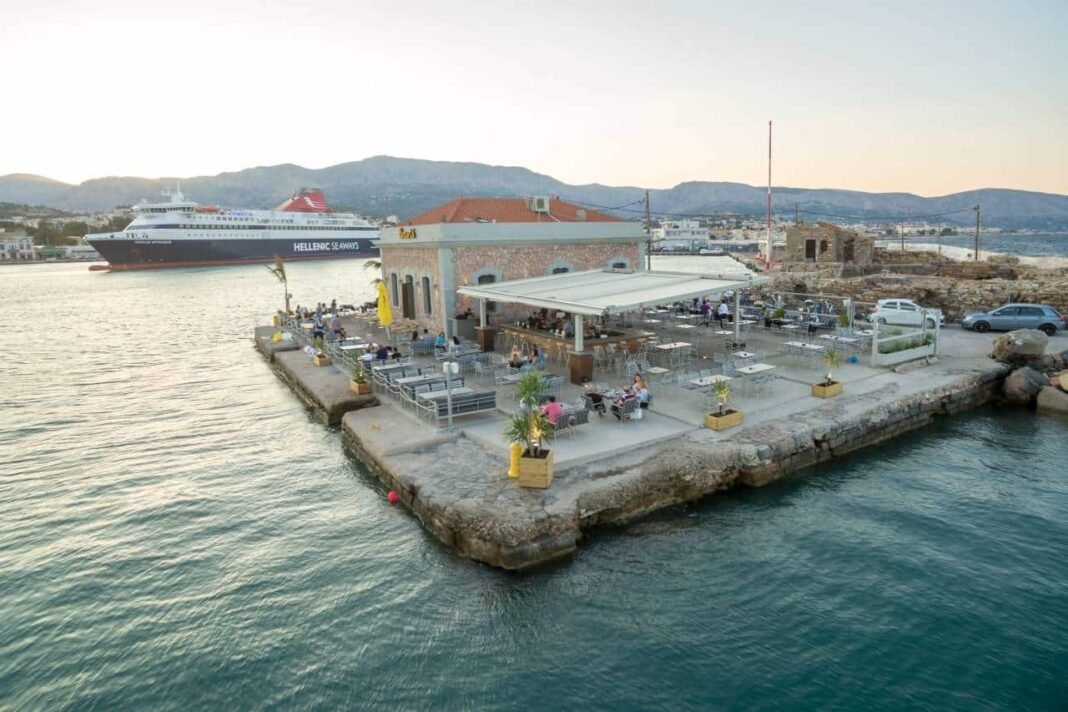
Turkish authorities have released footage showing a man attempting to set fire to the interior of Hagia Sophia, the 1,500-year-old Byzantine landmark in Turkey. Security guards at the historic site quickly intervened and stopped the arson attempt, preventing any major damage. The incident took place on July 11 but the video was only made public now, drawing renewed attention to Hagia Sophia’s Byzantine heritage
The man tried to ignite the Bible behind the lectern
According to a police statement, the suspect wore a red cap and partially covered his face as he ignited a Bible near a column behind several lecterns. Flames briefly spread to the carpet before security personnel intervened and extinguished them.
Police officers stationed nearby detained the 42-year-old man, who was later arrested. Authorities said he has a criminal history, including previous charges of assault, threats, verbal abuse, and car theft. Local media reported he has also been admitted to psychiatric hospitals five times in the past. During a court hearing, the suspect requested placement in a mental health facility.
Some idiot tried to burn down the Hagia Sophia in a failed act of cultural terrorism!
What is wrong with people…what motivates such behaviors?pic.twitter.com/PBqcDVoOw3
— ShadowsOfConstantinople (@RomeInTheEast) August 5, 2025
The incident comes during major restoration work
The attempted arson occurred as Hagia Sophia undergoes major restoration work aimed at safeguarding its structure against earthquakes and preserving centuries-old mosaics and domes. Turkish officials announced earlier this year that the renovation, the most comprehensive in 150 years, would reinforce the building’s iconic dome and supporting buttresses while maintaining public access.
The dome of Hagia Sophia
A big restoration focusing on preserving the monument’s giant dome from the threat of earthquakes is about to begin. pic.twitter.com/KCfA0ynXpi
— The Hidden Face of Istanbul (@thehiddenfaceof) April 26, 2025
The project includes removing aged lead cladding, reinforcing structural joints identified through seismic simulations, and installing a steel canopy and platform to support restoration teams.
Byzantine cathedral turned Ottoman mosque
Hagia Sophia, built between 532 and 537 CE during the reign of Byzantine Emperor Justinian I, served as the central cathedral of the Eastern Roman Empire for nearly a millennium. Renowned for its massive dome and pioneering use of pendentives, it became a symbol of Orthodox Christianity and a cornerstone of Byzantine architecture.
After the Ottoman conquest of Constantinople in 1453, Sultan Mehmed II converted the structure into a mosque. It remained an Islamic place of worship until 1934, when the secular Turkish Republic designated it a museum.
In 2020, Turkey’s highest court overturned that decision, allowing it to reopen as a mosque. The move has been highly controversial, triggering widespread international criticism—from UNESCO, the World Council of Churches, and numerous national leaders—who decried the process as politically motivated, exclusionary to non-Muslims, and damaging to universal cultural heritage.
Symbol of shared heritage faces security challenges
The fire attempt underscores ongoing challenges in protecting the site, which embodies a complex history. Hagia Sophia remains a UNESCO World Heritage site and a focal point of cultural identity in Istanbul.
Authorities have not disclosed a motive for the incident, but security around the building has been tightened. The suspect remains in custody as investigations continue.


